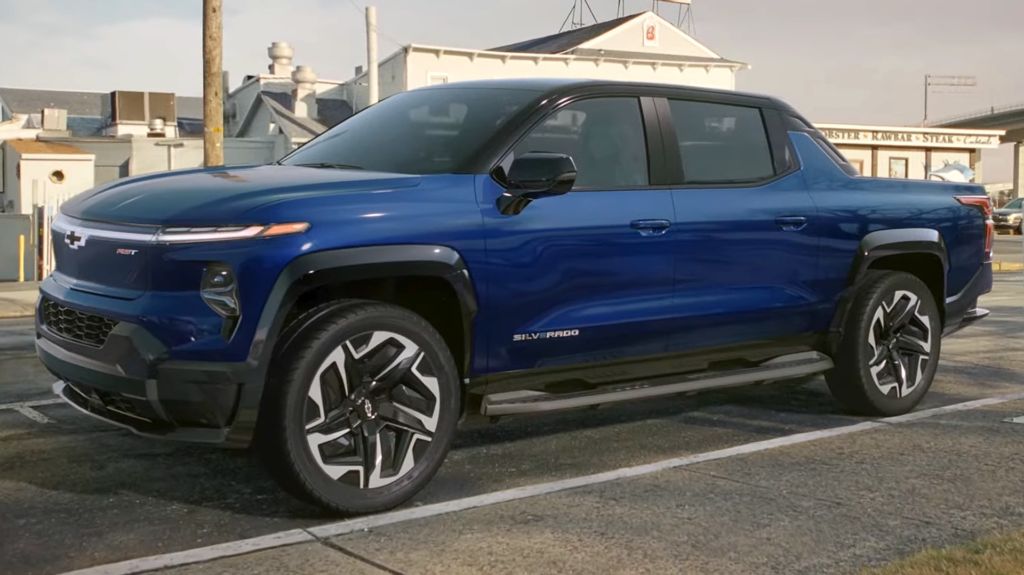
Classic cars transcend mere transportation; they are tangible segments of history, masterpieces of engineering, and significant cultural touchstones. For the devoted automotive enthusiast, these vehicles represent a profound connection to eras past, embodying the distinctive designs and meticulous craftsmanship that define vintage automobiles. Owning such a piece is not just about possession; it is a commitment to safeguarding a vital part of automotive heritage for generations yet to come. The passion for classic cars is deeply rooted in this appreciation for their legacy.
While the irresistible urge to experience these beautiful machines on the open road is a sentiment universally understood by collectors and admirers, a select few stand apart. These are the vehicles whose intrinsic value, rarity, and intricate engineering demand a different approach—one of careful preservation through strategic storage. Driving them regularly, while undeniably thrilling, carries the inherent risk of wear, tear, and depreciation that could compromise their historical integrity and market value. It’s a delicate balance between the joy of driving and the imperative of conservation.
This authoritative guide delves into a curated list of classic cars that, despite their formidable performance capabilities and undeniable curb appeal, are ideally suited for storage rather than frequent use. We will explore the unique attributes of each, dissecting the specific reasons why these automotive legends command such reverence and why their optimal future lies in a carefully controlled environment, protecting their legacy as true rolling pieces of history. For enthusiasts who understand that true value extends beyond the immediate thrill, this exploration offers a path to long-term appreciation and preservation.

1. Ferrari 250 GTO
Among the pantheon of automotive legends, the Ferrari 250 GTO holds an almost mythical status, a testament to unparalleled engineering and breathtaking design. Produced in an exceptionally limited run between 1962 and 1964, only 36 units ever left the factory gates. This extreme scarcity immediately elevates its position, making it one of the most coveted and valuable vehicles ever created. For any serious collector, the acquisition of a 250 GTO represents the pinnacle of automotive investment and passion.
Beneath its elegantly sculpted exterior lies a formidable V12 engine, a powerhouse capable of propelling the car to speeds that were astonishing for its era. However, the true essence of the 250 GTO’s worth is not solely found in its performance metrics. Its real value is deeply intertwined with its exclusivity, its impeccable racing pedigree, and the rich tapestry of history it embodies. Each turn of its wheel, each roar of its engine, resonates with the triumphs and innovations of a golden age of motorsport.
For those fortunate enough to be custodians of this iconic vehicle, the decision to store it meticulously rather than subject it to the rigors of regular driving becomes a clear imperative. Preserving its original condition—its pristine bodywork, its meticulously crafted interior, and its perfectly tuned mechanicals—is paramount to safeguarding its immense financial and historical worth. Every scratch, every ding, every hour of wear and tear directly impacts a legacy that transcends monetary value.
Moreover, the intricate nature of its vintage components means that regular operation would necessitate frequent, highly specialized, and prohibitively expensive maintenance. Parts are rare, expertise is scarce, and any repair carries the weight of potentially diminishing originality. Thus, careful storage in a climate-controlled environment ensures that this automotive masterpiece remains a pristine capsule of its time, ready for appreciation by future generations.
Ultimately, the Ferrari 250 GTO is not merely a car; it is a work of art, a historical document, and a profound investment. Its place is not on the daily commute but in a hallowed space where its beauty, rarity, and historical significance can be perfectly preserved. This approach secures its legendary status and ensures its continued appreciation, both as an object of desire and a cornerstone of automotive history, as indicated in available expert analyses.
Car Model Information: 2020 Lincoln Aviator Black Label Grand Touring AWD
Name: Ferrari 250 GTO
Caption: 1963 Ferrari 250 GTO (chassis 4153GT)
Manufacturer: Ferrari
Production: 1962–1964,(36 produced)
Designer: Giotto Bizzarrini,Scaglietti
Class: Sports car
BodyStyle: berlinetta
Related: Ferrari 330#330 LMB,Ferrari P#250 LM
Layout: FR layout
Engine: 2,953 cc,Ferrari Colombo engine#250,Overhead camshaft#Single Overhead camshatf,Weber carburetor,Compression ratio
Powerout: 300 PS
Abbr: on
Order: flip @ 5500 rpm
Transmission: Manual transmission
Wheelbase: 2400 mm
Length: 4325 mm
Width: 1600 mm
Height: 1210 mm
Weight: convert
Predecessor: Ferrari 250 GT SWB
Successor: Ferrari 250 LM,Ferrari 288 GTO
Categories: All articles lacking reliable references, All articles needing additional references, All articles with bare URLs for citations, All articles with unsourced statements, Articles lacking reliable references from March 2022
Summary: The Ferrari 250 GTO is a grand tourer produced by Ferrari from 1962 to 1964 for homologation into the FIA’s Group 3 Grand Touring Car category. It was powered by Ferrari’s Tipo 168/62 Colombo V12 engine. The “250” in its name denotes the displacement in cubic centimeters of each of its cylinders; “GTO” stands for Gran Turismo Omologato, Italian for “Grand Touring Homologated”.
Just 36 of the 250 GTOs were manufactured between 1962 and 1964. This includes 33 cars with 1962–63 bodywork (Series I) and three with 1964 (Series II) bodywork similar to the Ferrari 250 LM. Four of the older 1962–1963 (Series I) cars were updated in 1964 with Series II bodies.
When new, the 250 GTO cost $18,000 in the United States, with buyers personally approved by Enzo Ferrari and his dealer for North America, Luigi Chinetti. This model has since become highly desired by automobile collectors and sales have repeatedly set price records. The current record for world’s most expensive Ferrari was set in June 2018 when a 1963 250 GTO (chassis 4153GT) was sold in a private sale for $70 million.
In 2004, Sports Car International placed the 250 GTO eighth on their list of Top Sports Cars of the 1960s, and nominated it the top sports car of all time. Similarly, Motor Trend Classic placed the 250 GTO first on a list of the “Greatest Ferraris of All Time”. Popular Mechanics named it the “Hottest Car of All Time”.
Get more information about: Ferrari 250 GTO
Buying a high-performing used car >>>
Brand: Ferrari Model: 250 GTO
Price: $41,991 Mileage: 8,125 mi.
Read more about: The Ultimate Flex: Exploring the World’s Most Expensive Celebrity Car Collections

2. Aston Martin DB5
The Aston Martin DB5, manufactured from 1963 to 1965, has etched its indelible mark in global popular culture, forever linked with the epitome of suave sophistication: James Bond. Its mere silhouette evokes images of thrilling espionage, ingenious gadgets, and timeless elegance. This iconic association has propelled the DB5 beyond a mere car, transforming it into a cultural phenomenon and a universally recognized symbol of luxury and adventure. Its sleek design, powerful engine, and luxurious appointments make it an exceptionally desirable collector’s item, captivating enthusiasts worldwide.
While the sight of a DB5 gliding down a modern road undoubtedly commands attention and elicits admiration, the practical implications of regular driving for such a legendary vehicle are substantial. Each mile added to the odometer, each encounter with everyday road conditions, contributes to the inevitable wear and tear that can significantly diminish its inherent value. Unlike contemporary vehicles built for durability and ease of maintenance, the DB5’s vintage components are more susceptible to the ravages of consistent use, from chassis stress to engine strain.
Given its revered status as a cultural icon and its escalating value in the collector’s market, the judicious decision to store the DB5 becomes a smart strategic move for any classic car enthusiast. Preserving its condition is not just about maintaining its aesthetic appeal; it’s about safeguarding a tangible piece of cinematic history and an automotive benchmark. A well-preserved DB5 is a testament to an era of British engineering excellence and design prowess, reflecting meticulous care and foresight.
Furthermore, the complexity of its period-specific mechanicals means that sourcing authentic replacement parts and finding skilled technicians for repairs can be a daunting and costly endeavor. Avoiding unnecessary stress on these components through careful storage helps to mitigate the risk of needing such specialized interventions. This proactive preservation ensures that the car remains in a state as close to its original glory as possible, reflecting its timeless appeal.
Therefore, for those who cherish its heritage and recognize its profound cultural significance, the Aston Martin DB5 is best regarded as a treasured exhibit, to be meticulously stored and selectively displayed. This approach honors its legacy, protects its considerable investment value, and allows it to continue inspiring awe for many decades to come, far outweighing the transient pleasure of frequent drives. It is, in essence, a monument to automotive artistry and cultural resonance.
Car Model Information: 2020 Lincoln Aviator Black Label Grand Touring AWD
Name: Aston Martin DB5
Manufacturer: Aston Martin
Production: 1963–1965 (1,059 units),2020 (25 units)
Assembly: Newport Pagnell,England
Designer: Carrozzeria Touring Superleggera
Class: Grand tourer
BodyStyle: coupé
Layout: Front-engine, rear-wheel-drive layout
Engine: DOHC,Straight-6,3995 cc
Order: flip
Abbr: on
Powerout: convert
Transmission: ZF Friedrichshafen
Length: 4570 mm
Width: 1680 mm
Wheelbase: 98.0 in
Predecessor: Aston Martin DB4
Successor: Aston Martin DB6
Doors: 2
Weight: 3311 lb
Sp: uk
Categories: Articles with short description, Aston Martin vehicles, CS1: unfit URL, Cars discontinued in 1965, Cars introduced in 1963
Summary: The Aston Martin DB5 is a British grand tourer (GT) produced by Aston Martin and designed by Italian coachbuilder Carrozzeria Touring Superleggera. Originally produced from 1963 to 1965, the DB5 was an evolution of the final series of DB4. The “DB” designation is from the initials of David Brown who built up the company from 1947 onwards.
The DB5 is best-known for its role in the James Bond films. It was first driven by the fictional spy in the film Goldfinger (1964). In 2013, the car featured on a “British Auto Legends” postage stamp issued by the Royal Mail.
Get more information about: Aston Martin DB5
Buying a high-performing used car >>>
Brand: Aston Martin Model: DB5
Price: $41,991 Mileage: 8,125 mi.
Read more about: The Ultimate Flex: Exploring the World’s Most Expensive Celebrity Car Collections

3. Mercedes-Benz 300 SL Gullwing
The Mercedes-Benz 300 SL Gullwing, produced between 1954 and 1963, stands as a monumental achievement in automotive engineering and design, instantly recognizable for its eponymous and utterly distinctive upward-opening doors. This innovative feature, born out of a structural necessity from its racing heritage, instantly set it apart, making it one of the most visually striking and mechanically intriguing vehicles of its time. Beyond its aesthetic novelty, the 300 SL was also a performance titan, earning the distinction of being the fastest production car of its era, a blend of revolutionary style and raw, unadulterated speed.
However, the very elements that contribute to the 300 SL’s legendary status—its complex engineering, pioneering design, and high-performance capabilities—also present a compelling argument for its preservation in storage. Its intricate mechanical systems, from the groundbreaking direct fuel injection system to its unique spaceframe chassis, demand an exceptional level of specialized maintenance. Regular driving exposes these sophisticated components to stresses and strains, significantly increasing the likelihood of costly and complex repairs. The expertise required to service these cars is rare, and the cost of parts can be astronomical.
Driving the Gullwing frequently, while undoubtedly an exhilarating experience, translates directly into accelerated wear and tear on these delicate systems. The engine, transmission, and suspension components, while robust for their time, are now decades old and not designed for the rigors of modern traffic or consistent high-speed operation without meticulous oversight. The financial outlay associated with keeping a regularly driven 300 SL in prime condition can quickly become a formidable burden, overshadowing the enjoyment of ownership.
To safeguard this engineering marvel, ensuring its longevity and maintaining its immense value, keeping it within a secure, climate-controlled storage facility is unequivocally the most prudent course of action. Such an environment protects its delicate mechanisms from environmental degradation, such as rust and moisture ingress, and minimizes the physical demands placed upon its rare components. It allows for controlled, scheduled maintenance rather than reactive, emergency repairs, which are often more damaging to originality and budget.
Therefore, the Mercedes-Benz 300 SL Gullwing, a vehicle that seamlessly fused avant-garde style with blistering speed, is best cherished as a preserved icon. Its place is in a collection where its historical significance, design brilliance, and engineering genius can be admired and maintained for future generations, rather than enduring the inevitable depreciation and mechanical fatigue associated with a life on the open road. It is a testament to a bygone era of automotive audacity.
Car Model Information: 2020 Lincoln Aviator Black Label Grand Touring AWD
CarName: Mercedes-Benz W194
Category: Endurance racing (motorsport)
Constructor: Mercedes-Benz in Formula One
Team: Mercedes-Benz in Formula One
Drivers: flagicon,Karl Kling,flagicon,Rudolf Caracciola,flagicon,John Fitch (racing driver)
EngineName: Mercedes-Benz M194 engine,Straight-six engine
Designer: Rudolf Uhlenhaut
Categories: All articles needing additional references, Articles needing additional references from January 2019, Articles with short description, Commons category link is on Wikidata, Le Mans winning cars
Summary: The Mercedes-Benz W194 (also called 300 SL) is an endurance racer produced by Mercedes-Benz for the 1952 Sportscar racing season, its first after World War II.
Powered by the 3.0 litre SOHC straight-6 M194 engine, it ran off an impressive string of victories that included 24 Hours of Le Mans, Bern-Bremgarten, the Eifelrennen at Nürburgring, and Mexico’s Carrera Panamericana.
Only ten W194s were made. This led to the iconic Mercedes 300 SL W198 Gullwing road car in 1954. The W194 was succeeded by the Mercedes-Benz 300 SLR in 1955.
Get more information about: Mercedes-Benz W194
Buying a high-performing used car >>>
Brand: Mercedes-Benz Model: 300 SL Gullwing
Price: $41,991 Mileage: 8,125 mi.
Read more about: The Ultimate Flex: Exploring the World’s Most Expensive Celebrity Car Collections
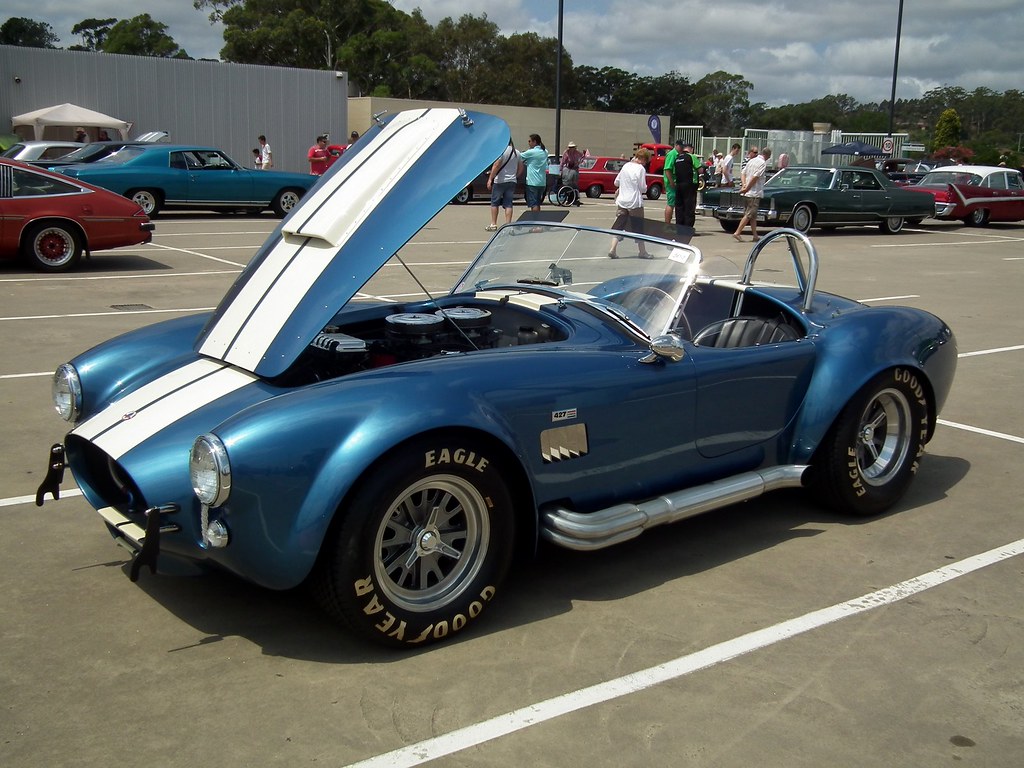
4. Shelby Cobra 427
Within the realm of American muscle cars, the Shelby Cobra 427 reigns supreme as an undisputed legend, a symbol of raw power, aggressive styling, and unparalleled performance. Produced in the mid-1960s, this formidable machine was the brainchild of the visionary Carroll Shelby, who masterfully combined a lightweight British AC Ace roadster chassis with an absolutely colossal Ford V8 engine, specifically the formidable 427 cubic inch unit. The result was a car that offered truly thrilling, visceral performance, capable of dominating both racetracks and the imaginations of enthusiasts.
However, the very attributes that define the Cobra 427’s legend—its monumental V8 engine and its featherlight body—also underscore its suitability for preservation in storage. The car’s limited production numbers contribute significantly to its rarity, making each surviving example a precious artifact of automotive history. This scarcity, combined with its distinguished racing pedigree, positions the Cobra 427 as a prime candidate for careful storage, protecting its intrinsic value and historical significance from the inevitable consequences of regular driving.
Exposing this powerful, yet inherently delicate, machine to the daily grind of modern roads, or even occasional spirited drives, introduces a multitude of risks. The massive engine, while a marvel of power, demands meticulous maintenance and can be notoriously thirsty. Furthermore, the lightweight construction, designed for track performance, is less forgiving of road imperfections and potential impacts, making it vulnerable to damage that can be expensive and difficult to repair, especially when maintaining originality is key.
By carefully keeping the Shelby Cobra 427 off the road and within a controlled environment, owners can effectively maintain its burgeoning value and sidestep the myriad risks associated with frequent operation. This includes avoiding wear and tear on critical components, protecting its pristine finish from environmental hazards, and mitigating the chance of accidents that could lead to irreparable damage. It is an investment in both its future financial appreciation and its continued legacy as a purebred American performance icon.
Ultimately, the Shelby Cobra 427 is more than just a fast car; it is a profound statement of automotive engineering and a cultural icon representing a pinnacle of American automotive daring. Its aggressive charm and thrilling performance are best appreciated in a state of carefully managed preservation, allowing its legend to endure for generations to come, as acknowledged in discussions among serious collectors. This approach ensures it remains a timeless symbol of power and ingenuity.
Car Model Information: 2020 Lincoln Aviator Black Label Grand Touring AWD
Caption: AC Cobra 427
Layout: front-engine, rear-wheel drive layout
Manufacturer: AC Cars,Shelby American
Production: 1965–1967
Name: MkIII
Aka: AC Shelby Cobra , Shelby AC Cobra
BodyStyle: Roadster (automobile)
Assembly: Thames Ditton,Surrey,England
Predecessor: AC Ace
Class: Sports car
Successor: AC MK IV
Related: AC Frua,Shelby Daytona
Engine: cvt,V8 engine
Wheelbase: cvt
Length: cvt
Width: cvt
Height: cvt
Weight: cvt
Categories: 1960s cars, AC vehicles, All articles with unsourced statements, Articles with short description, Articles with unsourced statements from December 2014
Summary: The AC Cobra, sold in the United States as the Shelby Cobra and AC Shelby Cobra, is a sports car manufactured by British company AC Cars, with a Ford V8 engine. It was produced intermittently in both the United Kingdom and later the United States since 1962.
Get more information about: AC Cobra
Buying a high-performing used car >>>
Brand: Shelby Model: Cobra 427
Price: $41,991 Mileage: 8,125 mi.
Read more about: Unleash the Beasts: 14 Legendary American Cars That Roared Through the 1960s, Forging an Unforgettable Automotive Decade

5. Jaguar E-Type Series 1
When the Jaguar E-Type Series 1 was unveiled in 1961, it immediately captured the world’s imagination, becoming an instant sensation. Enzo Ferrari himself famously declared it “the most beautiful car ever made,” a testament to its stunning design and revolutionary aesthetics. Its sleek, aerodynamic lines and voluptuous curves established a new benchmark for automotive beauty, making it a timeless masterpiece that continues to captivate onlookers today. Beyond its unparalleled visual appeal, the E-Type also offered exceptional performance, a potent combination that swiftly made it a beloved favorite among car collectors and driving enthusiasts alike.
Despite its exhilarating driving dynamics and the sheer pleasure it offers behind the wheel, the Jaguar E-Type Series 1 carries a historical significance and a potential for appreciating value that strongly advocate for its preservation through storage rather than frequent driving. As a vehicle that fundamentally redefined automotive design in the 1960s, its originality and condition are paramount to its long-term appeal and financial worth. Each mile driven, each exposure to the elements, subtly erodes this pristine state, impacting its status as a collector’s item.
The intricate mechanics and the period-specific components of the E-Type, while robust for their time, are now many decades old. Regular use places considerable stress on these systems, leading to accelerated wear and the increased likelihood of needing specialized repairs. Sourcing authentic replacement parts for a car of this vintage can be challenging and costly, and even minor repairs require expert craftsmanship to maintain the vehicle’s integrity and value. The sophisticated inline-six engine and its associated systems require careful attention.
Moreover, the E-Type’s historical importance extends beyond its engineering; it’s a cultural icon that shaped the perception of British sports cars globally. Preserving it in a controlled storage environment safeguards its aesthetic perfection and mechanical soundness, ensuring that its legacy as a design icon endures. It protects the original paintwork, interior finishes, and chassis from degradation caused by UV exposure, moisture, and road debris.
Therefore, while the temptation to regularly experience the E-Type’s exhilarating drive is powerful, the more prudent decision for a responsible owner and collector is to limit its road time. As noted by experts in classic car preservation, strategic storage helps maintain its exceptional condition, preserves its historical significance, and secures its potential for continued value appreciation, allowing this automotive icon to be cherished and admired as a piece of living art for many years into the future.” , “_words_section1”: “1945
We now continue our exploration into the rare echelons of automotive history, focusing on four more iconic classic cars that, despite their undeniable allure, are ideally preserved in careful storage. Beyond these exceptional vehicles, we’ll delve into the profound effects of inactivity on classic machinery, providing an expert-driven guide to short-term and long-term storage, and crucial advice for carefully reawakening a cherished classic.
Car Model Information: 1971 Jaguar E-Type Restomod
Sp: uk
Name: Jaguar E-Type
Caption: 1961 E-Type Series 1 3.8-Litre, the first production model of this open two-seater
Aka: Jaguar XK-E , Jaguar V-12
Manufacturer: Jaguar Cars
Production: 1961–1974
Class: Sports car
Predecessor: Jaguar XK150
Related: Jaguar D-Type,Jaguar XJ13
Successor: Jaguar XJS
Layout: FMR layout
Assembly: Coventry,England
Designer: Malcolm Sayer
Categories: 1970s cars, 2+2 coupés, All articles with dead external links, All articles with specifically marked weasel-worded phrases, All articles with unsourced statements
Summary: The Jaguar E-Type, or the Jaguar XK-E for the North American market, is a British front mid-engined sports car that was manufactured by Jaguar Cars Ltd from 1961 to 1974. Its sleek appearance, advanced technologies, high performance, and competitive pricing established it as an icon. The E-Type’s claimed 150 miles per hour (240 km/h) top speed, sub-7-second 0 to 60 mph (97 km/h) acceleration, largely unitary body construction, front and rear independent suspension with disc brakes, mounted inboard at the rear, and rack-and-pinion steering spurred industry-wide changes.
The E-Type was based on Jaguar’s D-Type racing car, which had won the 24 Hours of Le Mans for three consecutive years beginning in 1955.
The E-Type employed what was, for the early 1960s, a novel design principle, with a front subframe carrying the engine, front suspension and front bodywork bolted directly to the body tub. No ladder frame chassis, as was common at the time, was needed and as such the first cars weighed only 1,315 kg (2,899 lb).
It is rumored that, on its debut on 15 March 1961, Enzo Ferrari called it “the most beautiful car ever made”, but this statement is not fully confirmed. In 2004, Sports Car International magazine placed the E-Type at number one on their list of Top Sports Cars of the 1960s. In March 2008, the Jaguar E-Type ranked first in The Daily Telegraph’s online list of the world’s “100 most beautiful cars” of all time.
Get more information about: Jaguar E-Type
Buying a high-performing used car >>>
Brand: Jaguar Model: E-Type
Price: $64,900 Mileage: 2,455 mi.
Read more about: From Road Rage to Rental Cars: 14 Vehicles Fueling Our Deepest Driver Stereotypes
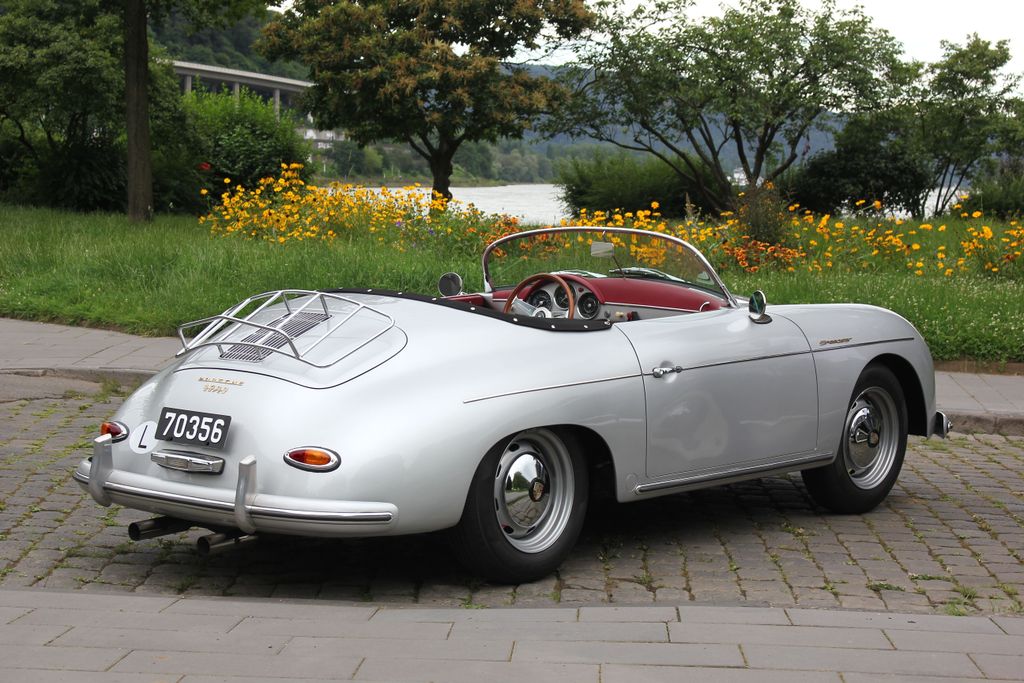
6. Porsche 356 Speedster
The Porsche 356 Speedster, produced from 1954 to 1958, is an emblem of minimalist performance and post-war European design. Its lightweight construction and agile handling fostered a pure connection to the road. This open-top variant of the 356 quickly solidified its place as a coveted design icon.
However, the Speedster’s inherent simplicity highlights its vulnerability. Its increasing rarity and desirability mean each surviving example is a treasure, with condition directly impacting its historical and financial value. Frequent road exposure risks diminishing its pristine state, a compromise responsible stewardship actively avoids.
Maintaining the Speedster requires meticulous storage. Protecting its original bodywork, delicate interior, and period-specific components from wear is paramount. Controlled environments ensure its legacy endures, safeguarding it from depreciation and damage accompanying consistent use.
Car Model Information: 2020 Lincoln Aviator Black Label Grand Touring AWD
Name: Porsche 356
Manufacturer: unbulleted list
Production: 1948–1965
Assembly: Gmünd, Carinthia
Successor: Porsche 911 (classic)
Caption: Porsche 356 C coupé
Class: Sports car
Related: unbulleted list
Layout: Rear-engine, rear-wheel-drive layout
BodyStyle: unbulleted list
Designer: Ferry Porsche,Erwin Komenda
Wheelbase: 82.7 in
Abbr: on
Order: flip
Length: convert
Width: 65.4 in
Height: convert
Weight: convert
Categories: 1950s cars, 1960s cars, 24 Hours of Le Mans race cars, All Wikipedia articles written in American English, All articles containing potentially dated statements
Summary: The Porsche 356 is a rear-engine sports car, and the first-ever production Porsche model.
The 356 is a lightweight and nimble-handling, rear-engine, rear-wheel drive, two-door available both in hardtop coupé and open configurations. Engineering innovations continued during the years of manufacture, contributing to its motorsports success and popularity. Production started in 1948 at Gmünd, Austria, where Porsche built approximately 50 cars. In 1950 the factory relocated to Zuffenhausen, Germany, and general production of the 356 continued until April 1965, well after the replacement model 911 made its September 1964 debut. Of the 76,000 originally produced, approximately half survive. The 356 was first produced by Austrian company Porsche Konstruktionen GesmbH (1948–1949), and then by German company Dr. Ing. h. c. F. Porsche GmbH (1950–1965). It was Porsche’s first production automobile. Earlier cars designed by the Austrian company include Cisitalia Grand Prix race car, the Volkswagen Beetle, and Auto Union Grand Prix cars.
The original price in 1948 for the 356 coupe was US$3,750 (equivalent to $49,100 in 2024) (official general USD inflation). The 356 cabriolet cost US$4,250 (equivalent to $55,600 in 2024).
Get more information about: Porsche 356
Buying a high-performing used car >>>
Brand: Porsche Model: 356 Speedster
Price: $41,991 Mileage: 8,125 mi.
Read more about: The Ultimate Flex: Exploring the World’s Most Expensive Celebrity Car Collections
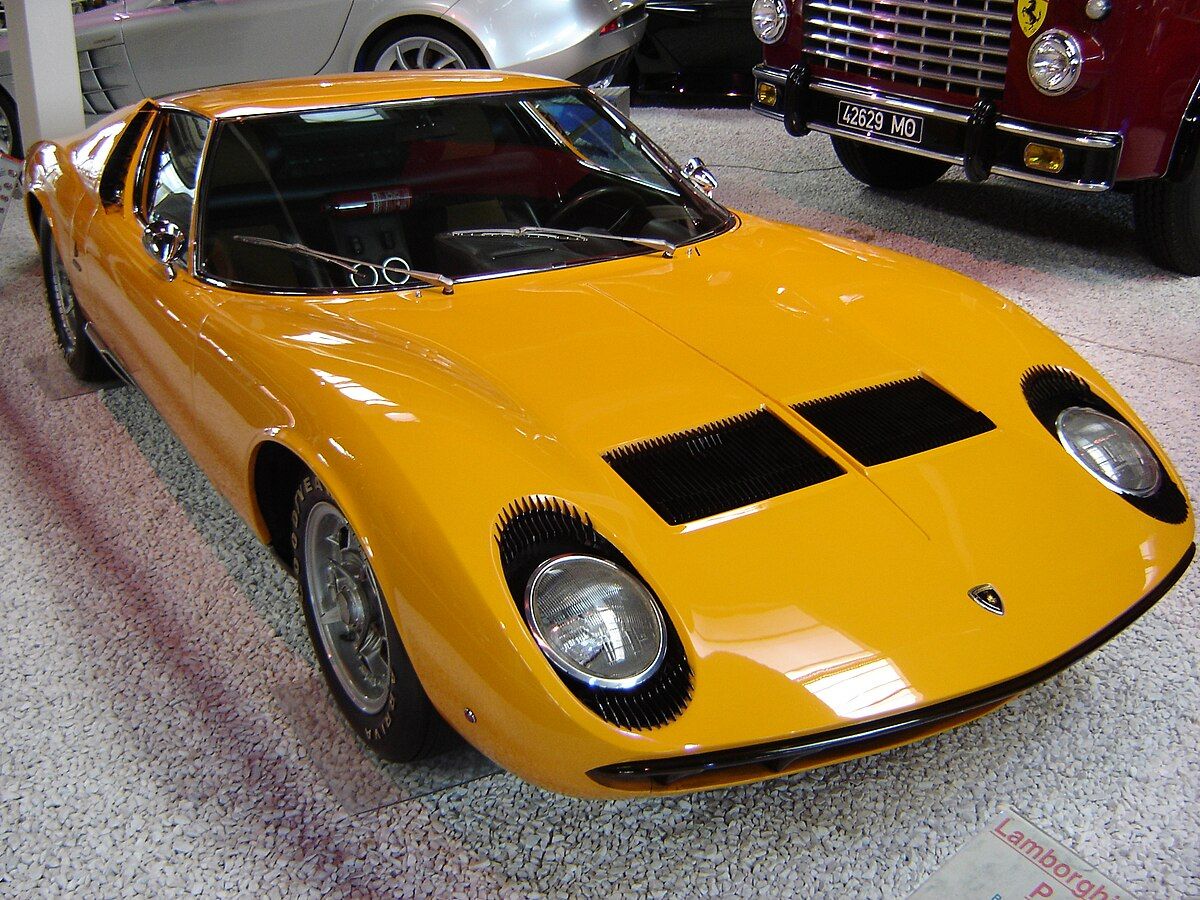
7. Lamborghini Miura
When the Lamborghini Miura debuted between 1966 and 1973, it redefined the automotive landscape, earning acclaim as “the first supercar.” Its revolutionary mid-engine layout, stunning Bertone design, and powerful V12 set an unprecedented benchmark for exotic styling and performance. The Miura was a magnificent fusion of art and engineering.
The Miura’s groundbreaking design and pivotal role in establishing the supercar genre elevate it beyond mere transport. Its significance as a pioneer, coupled with strictly limited production, makes each unit an invaluable piece of history. Subjecting such a rare vehicle to regular driving risks its unparalleled originality and immense value.
For custodians, meticulous storage is essential for preserving its status and ensuring continued admiration. Safeguarding its intricate V12, delicate body panels, and bespoke interior from the ravages of time and use is paramount. Secure, climate-controlled storage protects this masterpiece, maintaining its legendary standing.
Read more about: The Automotive Pantheon: A Curated Journey Through Jerry Seinfeld’s Most Coveted and Coolest Car Collection

8. Chevrolet Corvette Sting Ray (C2)
The Chevrolet Corvette Sting Ray (C2 generation, 1963-1967) stands as a hallmark of American automotive design. Instantly recognizable by its distinctive split rear window and sculpted body, the C2 Corvette blended potent performance with an iconic, muscular aesthetic, quickly becoming a symbol of American ingenuity.
While driving a C2 Corvette offers undeniable allure, its status as a cherished classic and potential for depreciation necessitate a measured approach. Regular driving introduces wear on components decades old, impacting aesthetic appeal and eroding its value, closely tied to originality.
For dedicated collectors, strategically storing the Corvette Sting Ray is optimal for preserving its legendary status and investment. This safeguards its distinctive design, powerful engine, and interior from environmental damage and consistent use. Maintaining its pristine state ensures this quintessential American sports car remains a preserved icon.
Car Model Information: 2020 Lincoln Aviator Black Label Grand Touring AWD
Name: Chevrolet Corvette (C2)
Caption: 1963 Chevrolet Corvette Sport Coupe
Manufacturer: Chevrolet
Aka: Chevrolet Corvette Sting Ray
Production: August 1962–July 1967
ModelYears: 1963–1967
Platform: Series 0800 (1962-1964),Series 194 (1965-1967)
Chassis: Body-on-frame
Assembly: St. Louis, Missouri
Predecessor: Chevrolet Corvette (C1)
Successor: Chevrolet Corvette (C3)
Class: Sports car
BodyStyle: Convertible (car),coupé
Layout: Front-engine, rear-wheel-drive layout
Engine: {{cvt,327,cuin,L,1,Chevrolet small-block engine#327,V8 engine
Wheelbase: cvt
Length: cvt
Width: cvt
Height: cvt
Weight: cvt
Transmission: manual transmission,manual transmission,Powerglide
Related: Bill Thomas Cheetah
Designer: Larry Shinoda
Categories: 1960s cars, All articles needing additional references, All articles with specifically marked weasel-worded phrases, All articles with unsourced statements, Articles needing additional references from July 2024
Summary: The Chevrolet Corvette (C2) is the second-generation Corvette sports car, produced by the Chevrolet division of General Motors (GM) for the 1963 through 1967 model years.
Get more information about: Chevrolet Corvette (C2)
Buying a high-performing used car >>>
Brand: Chevrolet Model: Corvette Sting Ray
Price: $41,991 Mileage: 8,125 mi.
Read more about: Queen Bey’s Coveted Collection: An Exclusive Deep Dive into Beyoncé’s 15 Most Glamorous and Powerful Rides
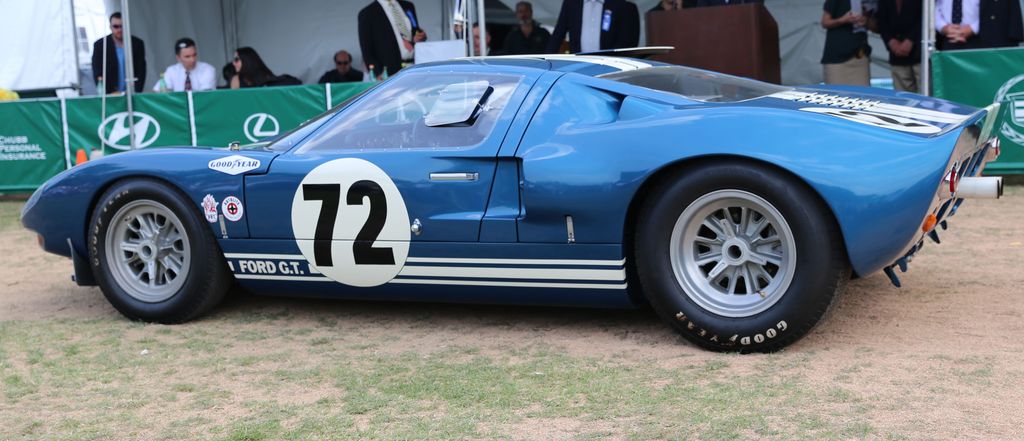
9. Ford GT40
The Ford GT40 (1960s) is a monument to an unwavering pursuit of victory and a defining chapter in motorsport history. Famously engineered to conquer Ferrari at Le Mans, achieving four consecutive wins, the GT40 cemented its legacy as an icon of racing dominance. Its purpose-built design makes it historically significant and valuable.
Given its incredible racing heritage and extremely limited production, the GT40 is a prime candidate for careful preservation in storage, far removed from public roads. Each surviving example is a tangible piece of automotive legend. Regular driving risks damage, wear, and tear, compromising its originality and immense value.
To truly honor its legacy, the GT40 is best kept where its historical importance can be meticulously maintained and its monetary value protected. Storage safeguards its sophisticated racing components, iconic livery, and pristine condition from degradation and operational stress, allowing it to inspire awe as a symbol of engineering triumph.
The inherent value and delicate nature of these automotive masterpieces make a strong case for their careful preservation. However, simply tucking a classic car away without thought can be as detrimental as driving it constantly. Understanding the mechanics of inactivity and proper storage is paramount to safeguarding these rolling pieces of history.
**How Long Can a Classic Car Sit Without Being Driven?**
While classic cars are meant to be driven periodically, the duration they can sit idle without significant issues varies. Minor issues like fluid settling occur within weeks. After 1-3 months, batteries often die, tires develop flat spots, and fuel degrades. Deterioration accelerates beyond three months, impacting fluids, rubber components, and leading to rust. Beyond a year, expect significant issues, especially if improperly stored.
**What Happens When a Classic Car Sits Idle?**
Unlike modern vehicles, classic cars are highly susceptible to prolonged inactivity. Regular use circulates fluids, lubricates parts, and helps prevent deterioration.
The Battery Will Drain: Due to natural discharge, batteries gradually lose charge, accelerated by cold weather. Use a battery tender or periodic starts; disconnect for long storage.
The Fuel Can Go Bad: Gasoline degrades, forming varnish that clogs the fuel system. Ethanol-blended fuels absorb moisture. Use a fuel stabilizer and keep the tank full.
Oil and Other Fluids Break Down: Fluids deteriorate. Moisture reduces oil’s lubrication; brake fluid absorbs water. Regular changes and periodic engine starts are vital.
Tires Can Develop Flat Spots: Car weight compresses tires, causing flat spots. Maintain proper inflation, roll the car periodically, or use jack stands.
Brakes May Seize: Lack of use causes calipers and drums to seize. Rust forms on rotors. Avoid parking with handbrake engaged; move the car occasionally.
Rust Can Take Hold: Moisture promotes rust on undercarriage and exhaust. Store in a dry, climate-controlled space, use breathable covers, and apply rust inhibitors.
Seals and Hoses Can Dry Out: Rubber components need fluid lubrication to stay supple. Without it, they dry, crack, or become brittle, leading to leaks. Periodically run the engine.
**How to Properly Store a Classic Car**
Effective storage is crucial for preserving a classic car’s condition, value, and functionality. Taking proper precautions ensures readiness.
Short-Term Storage (Up to 3 Months): Wash and wax, add fuel stabilizer to a full tank, and use a trickle charger. Store in a cool, dry garage with a breathable cover; inflate tires properly.
Long-Term Storage (3 Months to 1+ Year): Change oil. Place on jack stands, use moisture absorbers, and block exhaust/air intake for pests. Periodically check, rotate tires, and start the engine. A climate-controlled facility is optimal.
**Exploring Diverse Storage Solutions**
Choosing the right physical storage environment is as vital as preparation, offering varied protection levels for your classic.
A **Carport** gives basic weather protection but lacks humidity control, risking rust. **Portable garages** shield from weather; dehumidifiers are vital for humidity, and they need secure anchoring. **Underground parking** offers security and stable temperatures but often lacks power outlets. **Classic car storage facilities** provide climate-controlled environments and professional care, though at higher cost. A **Perambulator folding garage** is space-saving, protecting paintwork without direct contact. The **Car bubble** uses a fan system for a dry, consistent environment, reducing rust. Renting a garage offers conventional storage. **Shipping containers**, with insulation and dehumidification, can be secure. **Your own garage**, especially brick-built, is ideal for control.
**Bringing a Classic Car Back to Life After Long-Term Storage**
Reactivating a classic after extended storage demands patience and thoroughness. Rushing can cause damage; a methodical approach ensures a smooth, safe return.
**Check for Rodents:** Inspect engine bay, interior, undercarriage for nests or chewed wires.
**Inspect the Fluids:** If idle over a year, replace engine oil, coolant, brake fluid.
**Examine the Battery:** Assess charge; recharge or replace. Clean terminals.
**Look at the Tires:** Inspect for dry rot, cracks, flat spots. Ensure inflation. Replace brittle tires.
**Inspect Belts and Hoses:** Check rubber components for cracks or wear. Replace questionable parts.
**Prime the Fuel System:** Drain old fuel, clean tank, replace filter, flush lines. Stale fuel clogs components.
**Turn the Engine by Hand:** Manually rotate engine via crankshaft pulley to confirm pistons haven’t seized.
**Start Slowly:** Start and let idle gently. Monitor for noises, smoke, leaks. Allow gradual warm-up.
**Test the Brakes:** Pump pedal for pressure; check leaks. Resolve spongy pedal issues.
**Drive Cautiously:** Initial drives reveal problems. Drive slowly, listen for odd sounds. Be ready to stop.
Car Model Information: 1966 Ford GT40
Name: Ford GT40
Caption: Ford GT40 Mk.I in JWA Gulf Oil racing colors
Manufacturer: Ford Advanced Vehicles,John Wyer,Kar Kraft,Holman-Moody,Shelby American
Production: 1964–1969
Assembly: Slough,Los Angeles
Designer: Ron Bradshaw
Class: Group 4 (racing),Group 5 (racing),Group 6 (racing)
BodyStyle: coupé
Layout: MR layout
Engine: Cubic inch,289 CID (4737 cc) V-8,302 CID (4942 cc) V-8,427 CID (6997 cc) V-8
Transmission: Manual transmission
Wheelbase: 95 in
Abbr: on
Length: 160 in
Width: 70 in
Height: 40.5 in
Weight: convert
Successor: Ford P68
Sp: uk
Categories: 24 Hours of Le Mans race cars, All Wikipedia articles needing clarification, All articles needing additional references, All articles that may contain original research, All articles with specifically marked weasel-worded phrases
Summary: The Ford GT40 is a high-performance mid-engined racing car originally designed and built for and by the Ford Motor Company to compete in 1960s European endurance racing and the World Sportscar Championship. Its specific impetus was to beat Scuderia Ferrari, which had won the prestigious 24 Hours of Le Mans race for six years running from 1960 to 1965. As rules of the time required that GT cars were built in dozens and sold, around 100 cars in total have been made, mostly as 289 cu in (4.7 L) V8-powered Mk Is, of which at least 50 were made in 1965, which allowed FIA-homologation as Group-4-Sportscar for 1966 until 1971. This gave the old MK.I car of Gulf-Wyer the chance to enter and win Le Mans in 1968 and 1969 after prototypes had been limited to 3 litre, with the performance of the Ford 7-litre-V8 in the factory 1966 Mk.II and 1967 Mk.IV prototypes causing this rule change, which also banned the 4-litre V12 Ferrari 330P4 and others after 1967. The Mk.III designation was used for some road-legal cars.
The Ford GT40 debuted in 1964, and improvements in 1965 led to Ford winning World Championships categories from 1966 to 1968. The first Le Mans win came in 1966 with three 427 cu in (7.0 L) powered Mk.II prototypes crossing the finish line together, the second in 1967 with the same engine now in quite different US-built Mk.IV prototype chassis similar to the “J-car” mule. In order to lower ever-higher race top speeds, a rule change from 1968 onwards limited prototypes to 3.0 litre Formula 1 engines; the sportscar “loophole”, however, allowed the private JW “Gulf Oil” team to win at Le Mans in 1968 and 1969 running a Mk.I with a 5.0 litre engine.
The GT40 effort began in Britain in the early 1960s when Ford Advanced Vehicles began to build the Mk I, based upon the British Lola Mk6, in Slough, UK. After disappointing race results, the engineering team was moved in 1964 to Dearborn, Michigan, US, to design and build cars by its advanced developer, Kar Kraft. All chassis versions were powered by a series of American-built Ford V8 OHV engines modified for racing.
In the 1966 Le Mans, the GT40 Mk II car broke Ferrari’s winning streak, making Ford the first American manufacturer to win a major European race since Jimmy Murphy’s Duesenberg in the 1921 French Grand Prix. In the 1967 Le Mans, the GT40 Mk IV car became the only car developed and assembled entirely (both chassis and engine) in the United States to achieve the overall win at Le Mans.
Get more information about: Ford GT40
Buying a high-performing used car >>>
Brand: Ford Model: GT40
Price: $110,000 Mileage: 13,350 mi.
Read more about: Behind Closed Doors: Unveiling Dwayne ‘The Rock’ Johnson’s Multi-Million Dollar Muscle & Supercar Collection
The journey of classic car ownership is one of deep passion, intricate care, and unwavering dedication to preserving history. These magnificent machines are more than just vehicles; they are tangible links to a rich automotive past, each with a unique story and a legacy worth safeguarding. By understanding not only which cars to store but also the meticulous art of storage and reawakening, enthusiasts ensure that these cherished classics can continue to inspire awe and connect generations for decades to come, rolling forward through time as monuments to ingenuity and design.

